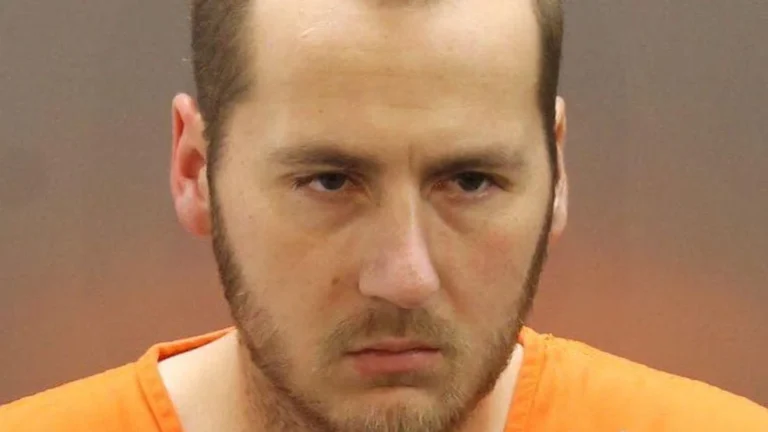
BOISE — Prosecutors preparing for the capital murder trial of Bryan Kohberger plan to rely heavily on security footage and a reconstructed timeline to argue that Kohberger is responsible for the deaths of four University of Idaho students in November 2022.
Kohberger, 30, a former graduate student at Washington State University, is charged with four counts of first-degree murder for the stabbing deaths of Ethan Chapin, Xana Kernodle, Madison Mogen, and Kaylee Goncalves. He faces the death penalty if convicted when his trial begins August 11 in Ada County, after a successful request to move the proceedings out of Latah County.
Surveillance Footage Tracks Suspect Vehicle
According to court filings, law enforcement canvassed the Moscow neighborhood near King Road and businesses in downtown Moscow to collect surveillance footage that would help narrow the timeline of the killings. Video from more than 20 locations, including bars, food vendors, and gas stations, captured movements of a white Hyundai Elantra — a vehicle matching the description of Kohberger’s car — throughout the night of the murders.
Originally, authorities estimated the timeframe of the killings to be between 4:00 and 4:25 a.m., but after reviewing video footage, they now allege the murders occurred within a 13-minute window, from 4:07 to 4:20 a.m.
Investigators traced the movements of “Suspect Vehicle 1,” a white Hyundai Elantra, which was seen leaving the Pullman, Washington area, where Kohberger lived, around 2:44 a.m. Cameras along State Route 270 captured the vehicle heading toward Moscow. It was later seen multiple times circling the King Road neighborhood, passing the residence at least five times between 3:30 a.m. and 4:07 a.m., prosecutors said.
At approximately 4:20 a.m., the vehicle was observed speeding away from the area. It was later captured on surveillance footage traveling back toward Pullman, appearing near Kohberger’s apartment complex around 5:26 a.m.
Victims’ Final Hours Detailed
Meanwhile, newly released court documents shed light on the final hours of the four students. Mogen and Goncalves had spent part of the evening downtown at the Corner Club bar before stopping at a food truck around 1:43 a.m. Video from businesses in the area helped investigators trace their movements until they arrived home shortly before 2:00 a.m.
Kernodle and Chapin, who were dating, attended a party at Chapin’s fraternity, Sigma Chi, located near the victims’ residence. They returned home to King Road sometime after 2:00 a.m., according to filings.
New testimony from surviving roommates, D.M. and B.F., revealed that the four roommates had debated going back out for a late-night snack around 2:00 a.m. but decided to stay in and go to bed. Text messages show D.M. tried contacting an Uber driver before the group changed plans.
At approximately 4:00 a.m., D.M. reported hearing unusual noises, including crying, coming from one of the rooms. She later saw a masked figure dressed in black walking past her doorway. Initially believing something was wrong but not fully grasping the situation, D.M. and B.F. texted the others without receiving a response.
By 4:26 a.m., D.M. moved downstairs and briefly glimpsed Kernodle lying motionless, assuming at the time she was intoxicated. D.M. and B.F. then locked themselves in a bedroom and remained there for several hours, continuing to attempt contact with their roommates. The 911 call was not placed until around noon that day.
Prosecution Strategy and Defense Challenges
Prosecutors intend to use the surveillance footage and timeline as critical evidence to place Kohberger at the scene. They will also present DNA evidence allegedly tying Kohberger to the crime, including genetic material found on a knife sheath discovered at the crime scene.
The defense has consistently challenged the strength of the evidence, arguing that Kohberger’s autism spectrum disorder diagnosis and other factors should be considered mitigating circumstances if he is convicted. Kohberger’s team also attempted to block certain references to “Suspect Vehicle 1” from trial testimony, arguing it could unfairly bias the jury. The judge denied that motion, ruling that the designation was appropriate.
Throughout pre-trial proceedings, Kohberger has maintained his innocence. His defense claims he was out driving alone during the time of the murders, a fact they intend to argue at trial. Kohberger, through his attorneys, has expressed confidence that he will be exonerated.
What Comes Next
The highly anticipated trial is set to begin with jury selection this summer and could extend into late fall. Prosecutors have said they will pursue the death penalty if Kohberger is found guilty, citing multiple aggravating factors, including the number of victims and the nature of the crimes.
If convicted, Kohberger faces either life in prison without parole or death by lethal injection under Idaho law.
The case, which drew national attention due to the brutal nature of the crime and the months-long search for a suspect, is expected to hinge heavily on forensic evidence, digital records, and the reconstructed timeline pieced together by investigators.




